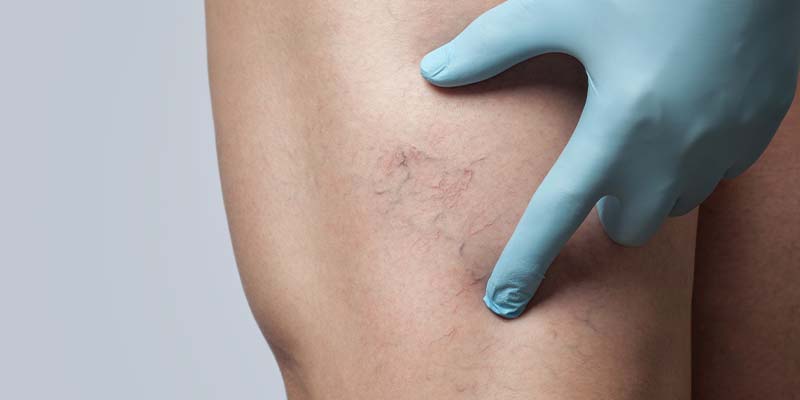Written By: Emma Squillace
If you have varicose or spider veins on your legs, you are not alone. It’s estimated that just over half of the female population, and just under half the male population, will have vein problems at some point. Females tend to get varicose veins more than males, partly because they can be attribute to pregnancy and hormonal changes or supplements. As frustrating as these visible veins are, the good news is they are highly treatable. You likely know some friends or family members who have had successful vein treatment. But you may not know exactly how these treatments work. Today we’ll explain what our experts do to get rid of spider or varicose veins at West Medical.
Laser Treatment
One of our most minimally invasive treatments is called Endovenous Laser Treatment (EVLT). We insert a tiny laser fiber into the vein we’re treating. We use a small amount of local anesthesia to numb the area, and then the laser sends a concentrated pulse of heat to the vein, which seals the vein off. This takes the vein out of the active circulation system, and it shrinks down. EVLT has a particularly high success rate, with only about 5-10% of veins coming back after 3 years.
Sclerotherapy
Another minimally invasive technique that can be used to treat visible veins is called sclerotherapy. We use this treatment for both spider veins and reticular veins. Reticular veins are a lot like spider veins, and can feed into spider veins, but they’re larger. They’re not varicose veins, however, because they don’t caused a raised or bunchy appearance the way varicose veins do. Sclerotherapy does not require any anesthesia. We use a very small needle to inject the affected vein with a substance called a sclerosant. This sclerosant causes a reaction inside your vein, which makes the vein collapse over the next week or so. This collapsed vein will no longer be visible through your skin. Since this is such a minimally invasive procedure, most patients continue with their normal activities right after sclerotherapy. Some veins need more than one treatment to fully disappear.
Microphlebectomy
While sclerotherapy is not for varicose veins, we do have another treatment that is quite successful for these raised and visible veins: microphlebectomy. At West Medical we use a specific type of this procedure called ambulatory phlebectomy. This is the least invasive option of its kind. In this procedure we remove the troublesome vein from your leg, instead of cutting off its blood supply. First, we numb the area. Then we make a very small incision near the vein, and remove it from the leg through the incision. Patients sometimes report feeling a pulling sensation, but the anesthesia we give you prevents pain. There are no stitches needed because the incision is so small. Once we’re done, we’ll cover the area with a bandage and you can resume your normal activities including walking and climbing stairs.
Ligation and Stripping
The final vein treatment procedure we offer is surgical ligation and stripping. This is the most invasive of our treatments, and we only recommend it for patients whose veins wouldn’t respond well to our other options. Ligation and stripping involves the removal of a large vein that runs the length of your leg. We do this by making an incision in the upper thigh, and removing the length of the vein all the way to your ankle. This removes the source of varicose veins for many people. Because this procedure is more invasive, it is the only vein procedure we do with general anesthesia. You’ll be asleep through the operation, and usually will go home the next day. Full recovery can take up to a month.
If you have varicose, spider, or reticular veins, there is a wide range of treatment options available. The best way to understand your choices is to come into West Medical for a consultation with our vein specialists. They will examine your problems areas, explain the types of visible veins you have, and teach you about the pros and cons of each treatment option. If you’d like to learn more about veins and vein treatments, please call our offices at (855) 690-0565.


